The different sides to chicken fencing
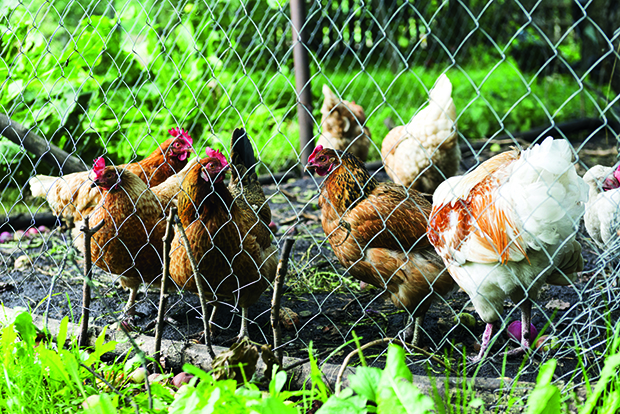
The best ways to keep chickens in their run and out of the garden.
Words: Andrea Graves
One of the first farmyard myths that gets busted when keeping chickens is that your birds will free-range without consequence. They will happily roam if you let them, but it’s often not without consequence. The bucolic vision of free-range hens is likely to be abandoned in town, where property sizes are small and the wreckage of stripped silverbeet stalks, mulch all over the path and multiple poo dollops on your deck becomes too much. You love your chickens, but you develop a strong urge to build a decent fence.
I’m a townie chicken-keeper, and I loved watching my first hens – three fine orpingtons – wander around our property and thoroughly enjoy themselves. I was delighted that the driveway seemed to have an invisible force field around it, because the birds never went down it to the road. But like many chicken-keepers, I wanted to continue growing vegetables successfully. I also had barefoot children who tromped through chicken poo on the paths then ran into the house. I needed a fence. I’ve learnt there are four things to consider when it comes to fencing.
GET CREATIVE
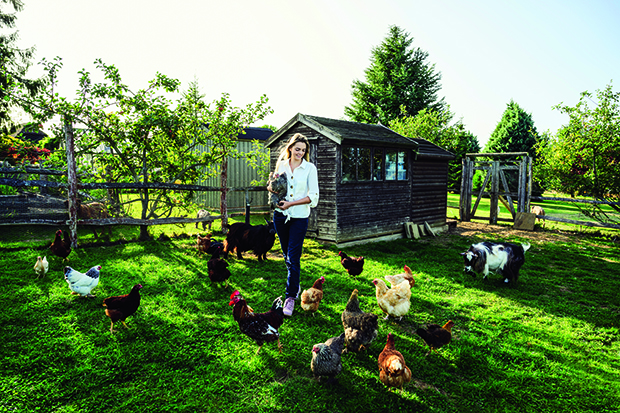
A fence can be made out of pretty much anything, as long as a chicken can’t squeeze through gaps.
Garden mesh, either wire or plastic, is a common material.
If the mesh you have isn’t at least a metre high, you can lash two lengths of it together, overlapping it slightly, to increase the height. Some chickens are quite good at climbing soft mesh, but stiff wire mesh with small squares seems to deter that kind of behaviour.
Chickens aren’t strong animals, so you can use fairly flimsy fence posts, such as bamboo stakes or straight, thin branches.
It helps if the posts are sharp enough to be easily pushed into the ground. These are cheap options. I use horse-height electric fence posts because they’re tall enough but very easy to move. Waratahs are a good sturdy option, but they’re expensive and quite a lot of work to pound in and dig out if you want to move the fence, especially if the ground is hard and dry.
If you don’t plan to move the fence often, you could even grow something up it to provide extra shade and food. Tomatoes, squash and passionfruit all need the support and can grow well up chicken mesh fencing.
Building fencing is a great opportunity to be inventive.
I have a few photos of various fencing types in my book. One is of old pool fencing woven with thin strips of wood from a woodworking hobby; another uses shade cloth stretched between posts. If you can figure out how to weave something out of nīkau palm fronds, go for it and please teach me how.
BUILD A FORTRESS
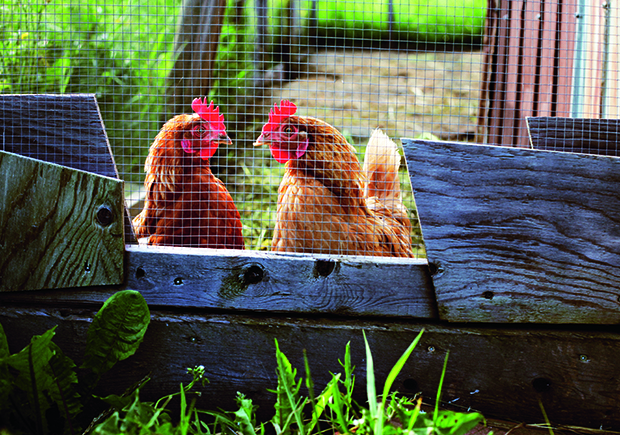
To be effective, a fence must be high enough that your birds can’t flutter over it and low enough that they can’t squeeze under it. While some people will advocate wing-clipping as a way to prevent birds from flying the coop, my attempts at wing clipping have not been successful. A height of 1.2m should suffice. But that will depend on the agility of the breed you keep. Heavy breeds such as orpingtons are far more easily contained than a light, flighty breed. Leghorns, for example, are very sprightly, and my hylines are athletic too. If you can tie any tree branches growing from inside your run onto your fence, it will create an overhead “roof” that will help contain more persistent escapees.
Consider, also, where there might be gaps in your defence. Chickens don’t like squeezing through small gaps, but they will certainly do so if they are desperate to escape, either underneath a fence or between any gaps at the sides. Gaps at the bottom can be pinned down with tent pegs or filled in with branches, bricks or whatever you have to hand. Chickens tend to create gaps at ground level by digging, so regular inspections are advisable.
I’ve also found it useful to fill any gaps with bunched-together prunings from divaricating plants (with densely interlaced stems) such as maidenhair (Muehlenbeckia). These take ages to break down and act like rolls of barbed wire, except of course they don’t cause injury.
WHAT’S INSIDE MATTERS
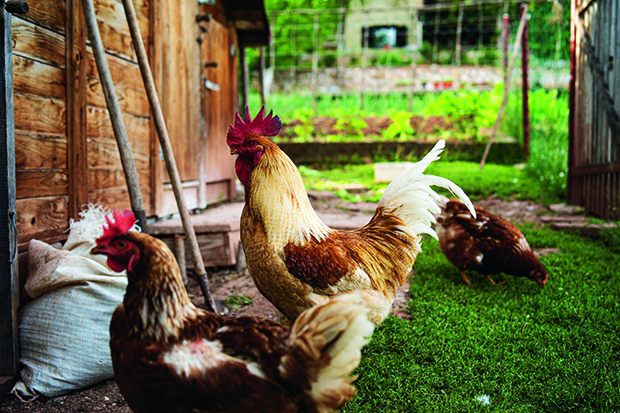
Fencing is usually erected to keep birds away from your garden, house, neighbour’s garden, unruly dogs, and inside an area that includes the home base that is their coop. A fence encloses them in a run that becomes, in effect, their prison. The onus is on us to make that prison as fit for purpose as possible and reduce the appeal of escape.
I’d never keep chickens in an area without a few trees or shrubs for shade, or without loose stuff to forage through. Often that includes leaves and weeds, but sometimes it’s just freshly forked soil – they get so excited that I have to be careful not to fork them as they dive in for worms. I’ve recently created a compost zone in the corner of the chicken run, which is nothing flasher than a ring of old logs with a heap of weeds thrown into the middle. This heap of gathered-together vegetation is a breeding ground for tiny insects and a favoured foraging spot for chickens. You can also give them a pile of logs for exploration, and maybe a day perch – but make sure they are positioned so they don’t become launching points for an escape flight over the fence.
FRESH GROUND
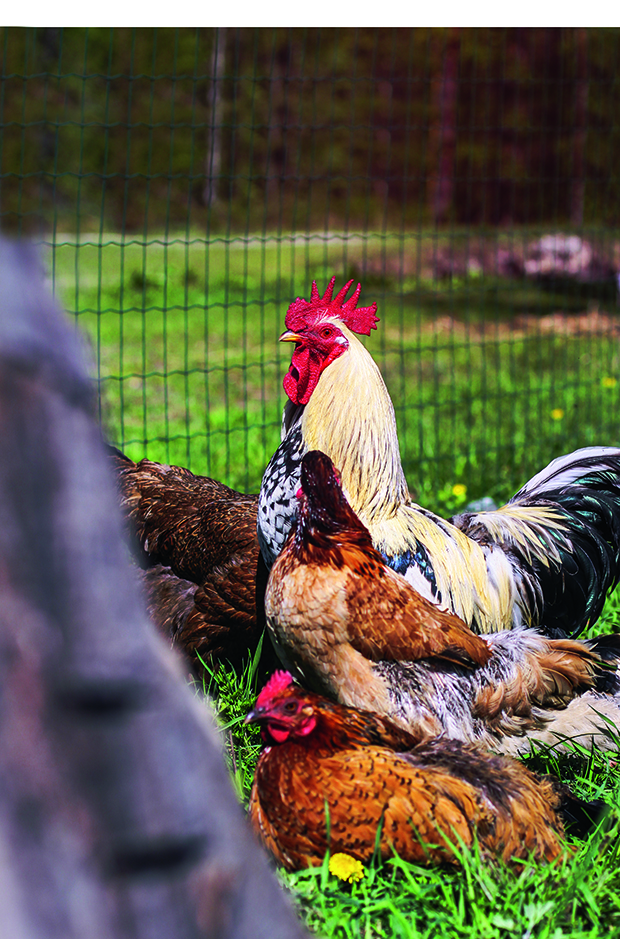
Chickens love fresh ground – so many tiny insects and so much to explore! Even if they are fenced-in rather than free-range chickens, there are a few ways to give them access to it. If you have the space, consider dividing your pen into two (or more) sections with fencing so that one section can rest and regenerate while the other is in use. This will keep the ground healthy, and your birds will enthusiastically explore the regrowth and insect life when they enter the restored area. Another method is to move the pen every few days or weeks if you can. This will require a chicken tractor or fence that’s designed to be easily moved, and suitable areas to move it to.
Sometimes you might think of an area that could host a run but that’s too far from the coop. One way to solve this is to create a tunnel linking the two fenced areas. Chicken wire, unsurprisingly, is ideal for this.
Make the tunnel high enough so they don’t bump their combs as they pass through.
Finally, you can give your birds regular free-range time. I let my chickens roam only occasionally, because when I did it often, they came to expect it and appeared distressed when they could see me but I didn’t let them out. It was as though they no longer accepted their lot because they’d become familiar with the nirvana that is the garden. Instead, I now focus on making their run interesting.
However, regular gardeners who have time and energy to lavish on their ladies may wish to set up some easily-moved fencing to provide new patches of ground for daytime “holidays” from the home run. Just make sure they have water available, and shade when it’s hot.
Love this story? Subscribe now!
 This article first appeared in NZ Lifestyle Block Magazine.
This article first appeared in NZ Lifestyle Block Magazine.
